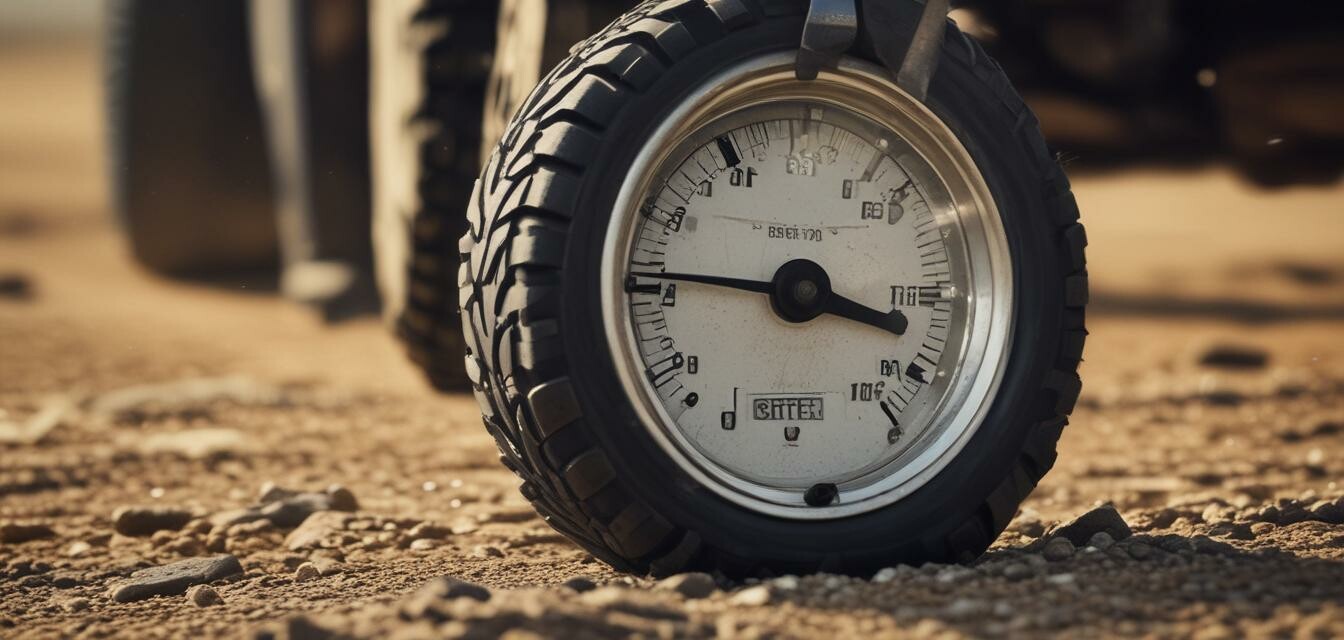
How to Ensure Your Tire Pressure is Always Optimal
Key Takeaways
- Maintaining optimal tire pressure improves safety and fuel efficiency.
- Check tire pressure regularly, especially before long trips.
- Understand the factors affecting tire pressure changes.
- Utilize proper tools like digital pressure gauges for accuracy.
Maintaining the right tire pressure is crucial for anyone looking to embark on an adventure. This not only enhances driving safety but also boosts fuel efficiency and extends tire lifespan. Below, we examine various facets of tire pressure management that every adventure vehicle owner should know.
Understanding the basics of tire pressure
Tire pressure is the amount of air inside your tire, measured in pounds per square inch (PSI). Each vehicle has a recommended PSI, usually found in the owner’s manual or on a sticker inside the driver’s door. Understanding and maintaining the correct tire pressure is vital for:
- Improved safety on various terrains.
- Better vehicle handling and performance.
- Increased fuel efficiency.
- Extended tire life.
Why tire pressure fluctuates
There are several natural factors that can affect tire pressure, including:
| Factor | Impact on Pressure |
|---|---|
| Temperature Changes | Pressure decreases by about 1 PSI for every 10°F drop in temperature. |
| Altitude Changes | Higher altitudes can cause a decrease in pressure. |
| Wear and Tear | Worn tires may leak air more frequently. |
How to check your tire pressure
Regular tire pressure checks are essential. Here’s a step-by-step guide on how to carry this out effectively:
- Purchase a reliable tire pressure gauge (digital gauges are recommended for accuracy).
- Ensure tires are cold before checking (wait at least three hours after driving).
- Remove the valve cap from the tire you want to check.
- Press the gauge onto the valve stem quickly to get a reading.
- Note the PSI reading and compare it with the recommended PSI.
- If necessary, inflate or release air until the correct pressure is achieved.
When to check tire pressure
Make it a habit to check your tire pressure:
- Before embarking on long road trips.
- At least once a month.
- Whenever you notice a change in handling or if a low-pressure warning light appears.
Tips for maintaining optimal tire pressure
Follow these additional tips to keep your tire pressure at an optimal level:
- Invest in a quality tire pressure monitoring system.
- Check the tire pressure when temperatures drastically change.
- Be mindful of weight changes, such as carrying heavy gear for camping.
- Regularly inspect tires for any visible damage or signs of wear.
- Rotate your tires regularly to ensure even wear, promoting a better seal and preventing air leaks.
Using tire gauges effectively
The type of tire gauge you use can impact the accuracy of your tire pressure readings. Here are some common types:
| Type of Tire Gauge | Advantages | Disadvantages |
|---|---|---|
| Digital Gauge | High accuracy, easy to read | Batteries can die |
| Dial Gauge | No batteries required, generally durable | Can be less accurate |
| Stick Gauge | Simple and affordable | Least accurate, can be difficult to read |
Importance of correct gauge usage
Regardless of the type of gauge you choose, ensure that you:
- Follow the manufacturer's instructions closely.
- Calibrate your gauge regularly, if possible.
- Store your gauge in a cool, dry place after use.
Conclusion
Maintaining optimal tire pressure is key to ensuring a safe and enjoyable off-road experience. Making tire pressure checks a regular part of your vehicle maintenance routine can prevent hazardous situations and ensure your adventure vehicle is always ready for the road. Always remember to choose quality tires that suit your needs, and utilize proper equipment to keep your tires performing at their best.
Pros
- Increased safety during off-road adventures.
- Better fuel efficiency with properly inflated tires.
- Extended lifespan of tires through regular maintenance.
Cons
- Must check tire pressure often.
- Requires investment in tools like tire gauges.
- Pressure can fluctuate in adverse conditions.
